20 December 2011 to 15 January 2012
It’s been about fifteen years since my previous visit to Burma (*) and if you are an avid reader of my blogs you will know that at some point down the road I will be telling you all about how the place has changed, blah, blah, blah, so it’s probably best to get it over with sooner than later.
(*) OK, OK I know it’s now Myanmar but Burma sounds so much better! On the flip side Yangon, which is the new name for Rangoon has a much nicer feel to it don’t you think?
So where to begin? The changes that I have observed are more subtle than those observed in neighbouring countries such as China (OK, bad example), Vietnam and the like and it’s probably easier to start with observations on what hasn’t changed rather than what has.
The Burmese people are still the friendliest and most charming people in Asia and to date, they don’t seem to have been changed by the negative effects that so often come with tourism in this part of the world (or any other part for that matter). Fingers crossed, it will remain that way.
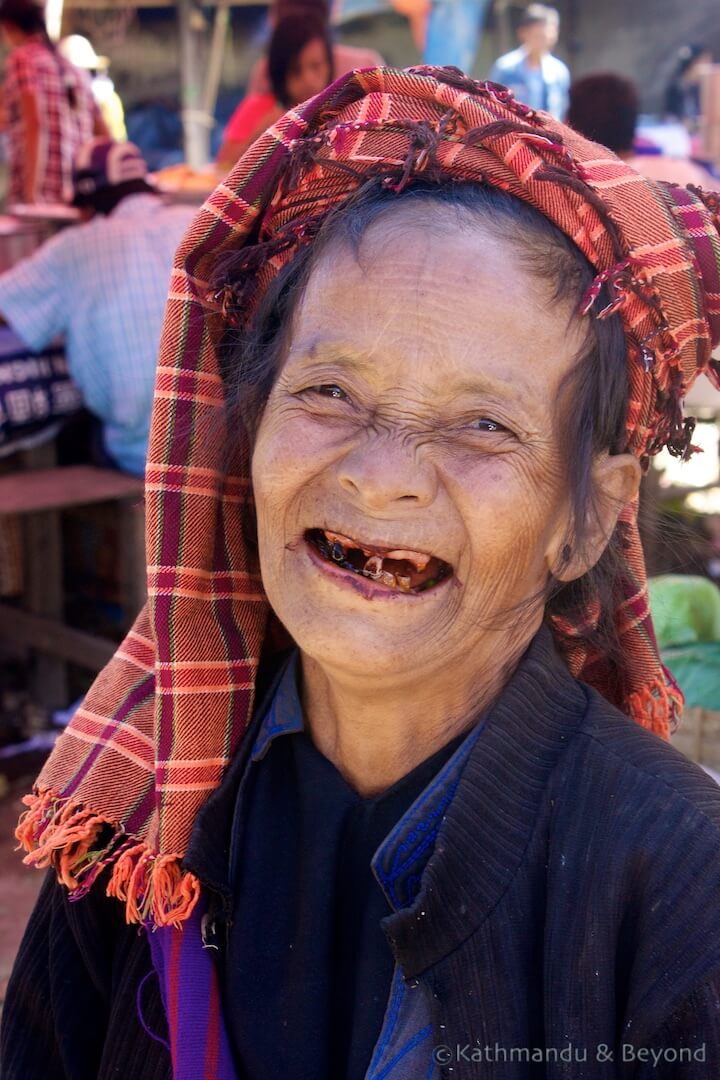
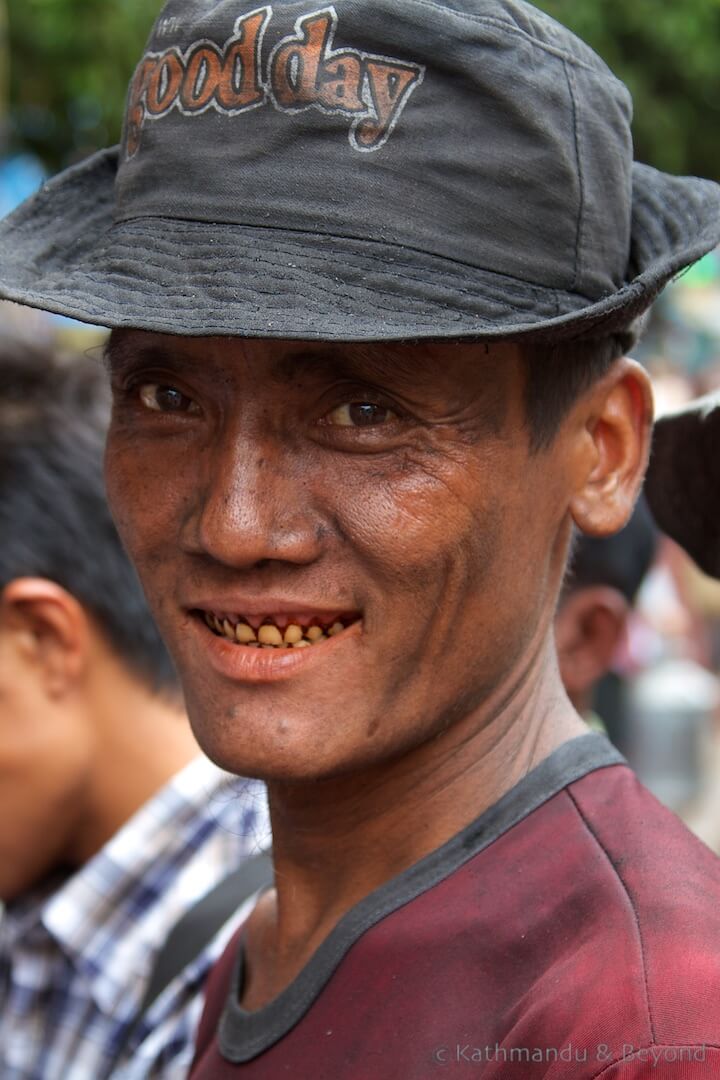
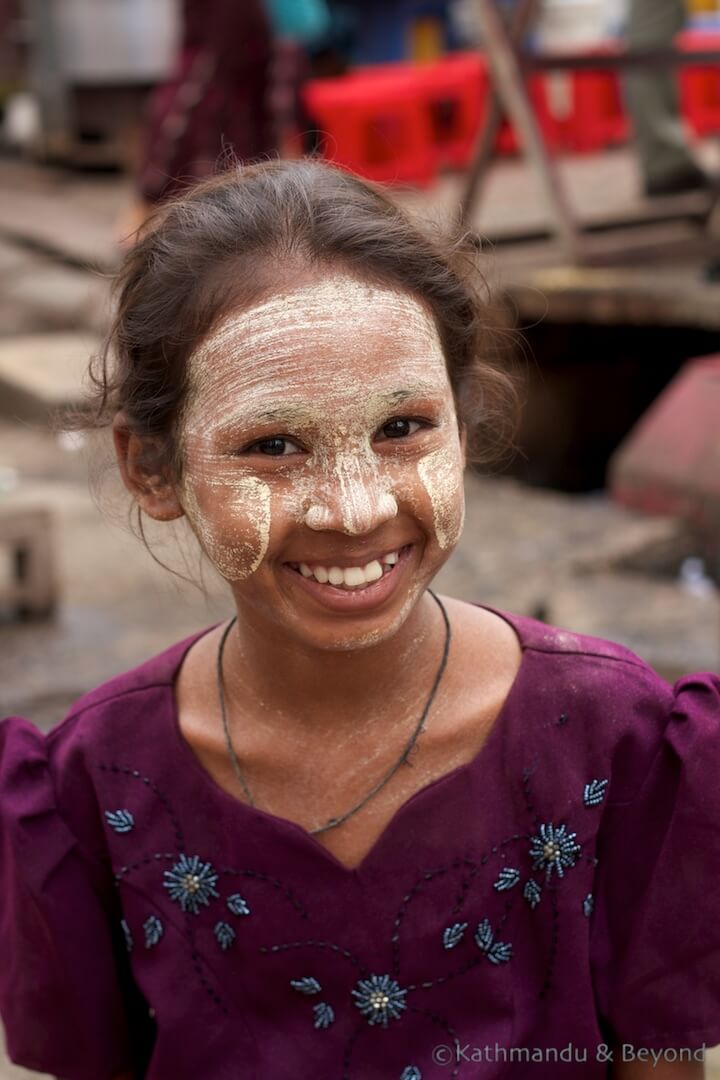
Above: Inle Lake (left) and Yangon (centre and right)
There still isn’t much traffic on the roads. This is mainly down to embargoes, sanctions and trade restrictions but not always. True, such things as a second-hand right-hand drive (*) Toyota from either Japan or Thailand that will set you back in the region of US$40,000 and with fuel costing a whopping (for the Burmese) US$5 a gallon means there is going to be less transport on the roads but equally an abundance of very cheap cycle-rickshaws (push bikes with a side-car) and a law banning motorbikes in Yangon also play their part.
(*) In 1970, in an attempt to distance Burma from British imperialism, the Generals instigated an overnight-switch from the left to the right. Hence many of the cars are still right-hand drive.
I don’t really want to dive into the realms of politics in this blog but this last point is a fine example of ‘stupid things we (the Military Junta, aka the Generals) have done whilst we have been in power’ (*). Apparently, a few years back, one of the top generals was involved in a crash in Yangon involving a motorbike. As a result, motorbikes were subsequently banned from the city but this law was not implemented anywhere else in the country. Hence you will see motorbikes in the remotest of villages but not in the biggest city in the country.
(*) Another fine example was moving the capital from Yangon to Naypyidaw in 2005 at an estimated cost of US$250M.
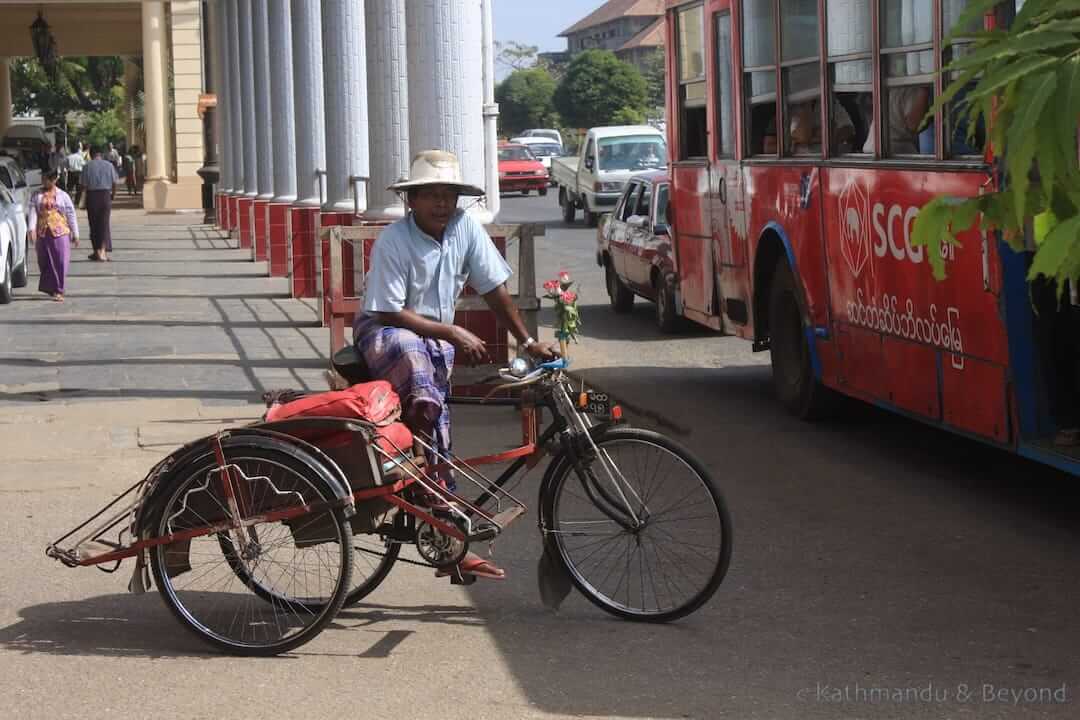 Yangon
Yangon
There are still two sets of prices in Burma. One for the Burmese and one for the ‘you are from another country and therefore filthy rich’ rest of us. This means that transport and food for tourists are normally double what the locals pay and accommodation can set you back triple the usual amount. This does make Burma a relatively expensive country and, for once, it is not just the Generals who are to blame. Many locals see us as ‘cash cows’ and fair game for ‘official’ overcharging. It’s not like your usual ‘trying it on’ overcharging that happens in the rest of Asia. This is accepted as the norm, not just by the Burmese but by many tourists as well and there is very little one can do about it. Every now and then you may get something at the real price but this is an exception and something to brag about to fellow travellers.
Burma is still a two-currency country. Kyat is the official currency, wanted by most of the Burmese, and US$ is the hard currency which is wanted mainly by the Generals. As a tourist, your day-to-day expenses will involve a combination of the two: Kyat for a meal and a bus ticket for example, US$ for a hotel room or an entrance fee.
Although it doesn’t sound so, juggling between the two currencies is one of the most difficult and time-consuming things you will have to do in Burma and working out how much US$ cash to take for your whole trip (there are no ATMs in the country and credit cards cannot be used outside of five-star hotels) and then working out how much of it to change into kyat is a serious matter. Adding insult to injury (and this really winds me up), your US dollar notes must be perfect and when I say perfect I mean perfect; no ink (or pencil) marks, no rips, no faded colour and no creases including the usual one you get down the middle when you to put them in your wallet.
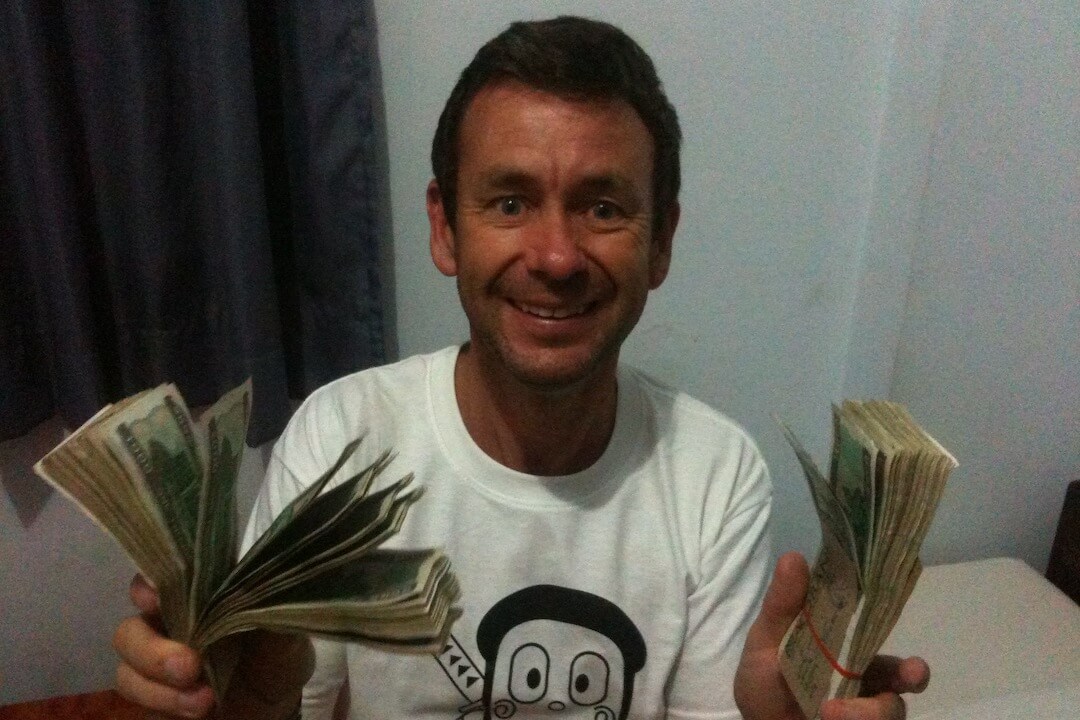
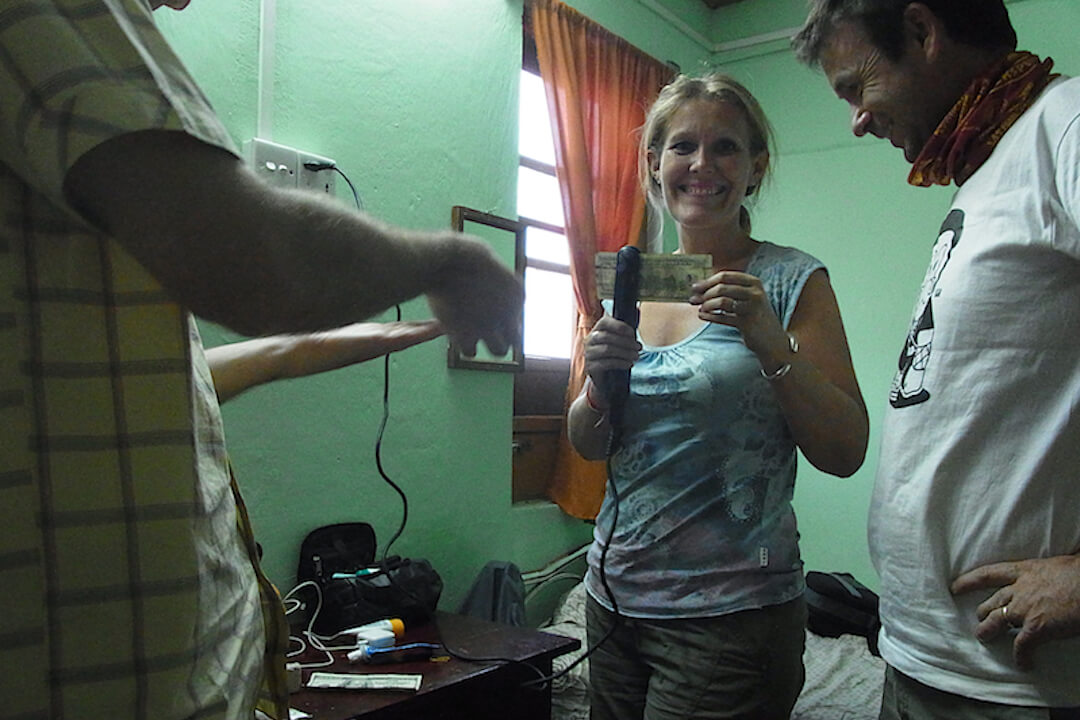
Wads of Kyat (left) and straightening dollars … (right)
In summary, you have to get top dollar notes (excuse the pun) before leaving for Burma (remember enough for your whole trip) and then carry them, unfolded between two pieces of cardboard or inside a heavy book and away from all the dirt, dust and crap that is par for the course if you are to stand any chance of using them once you arrive. The Burmese (and fellow travellers, us included) will not hesitate to reject a non-perfect note and it almost becomes a contest to see if you can offload one that is. Kirsty’s hair straighteners came into their own on this trip and were used more for getting the creases out of $100 bills for fellow travellers than for their original purpose (which was pointless anyway given the above-mentioned dirt, dust and crap). One guy we were travelling with fell down a manhole into an open sewer (don’t ask) in Indonesia taking all his nice new dollars with him. Of course, he had to wash them and by the time he got to Burma they were a little worse for wear. In particular, he had a $100 bill that was rejected everywhere we went so Kirsty ‘attacked’ it with the straighteners and a few hours later it was accepted by a hotelier – band of merry British/German/American/Romanian travellers 1 – the Generals (and anyone else wanting US dollars) 0!
The internet
I know the internet wasn’t around last time I visited Burma but that might as well be the case now. There must be a Blackadder ‘slower than a snail with…….’ wise-crack that would be appropriate to use right now but I can’t think of one but you get the gist. Normal email accounts such as Hotmail and Yahoo don’t even open (I had 57 emails to come back to upon my return to Thailand because I could not get into my usual account. Can you believe it!) and Gmail takes about 15 minutes. And then there is the censorship – forget Auntie (the BBC for you foreign lot!), even the Premiership was tricky which is ironic given the most commonly asked question in Burma is ‘Which football team do you support?’ By the way, Arsenal (Kirsty) is fine, Southampton (moi), gets very blank looks, a nervous giggle and a slow shuffle in the opposite direction.
There is a plus side to this lack of internet. It’s called talking. Our evenings (with said band of merry British/German/American/Romanian travellers) were spent swapping stories (mainly Kirsty) and jollities (mainly me) and drinking lots of beer (again mainly me) which made a refreshing change from the ‘I need to sit on my iPhone talking crap on Facebook and half listening to what’s going on around me’ evening that is so often the norm these days. Dare I say it, thank you Generals for buggering up the internet?
Fellow travellers
Finally, before moving on to what’s changed, I must say that the calibre of traveller in Burma is still the same. Although only an hour from Bangkok, the masses have most definitely NOT arrived in Burma and the country is a much better place for it. Am I a travel snob? I don’t think I have ever denied it and it is great to be somewhere with like-minded, well-travelled people so thank you to Burkhard (Germany), Braeden (America/Japan) and Lucian and Diana (Romania/Belgium) for happy travels and fun stories.
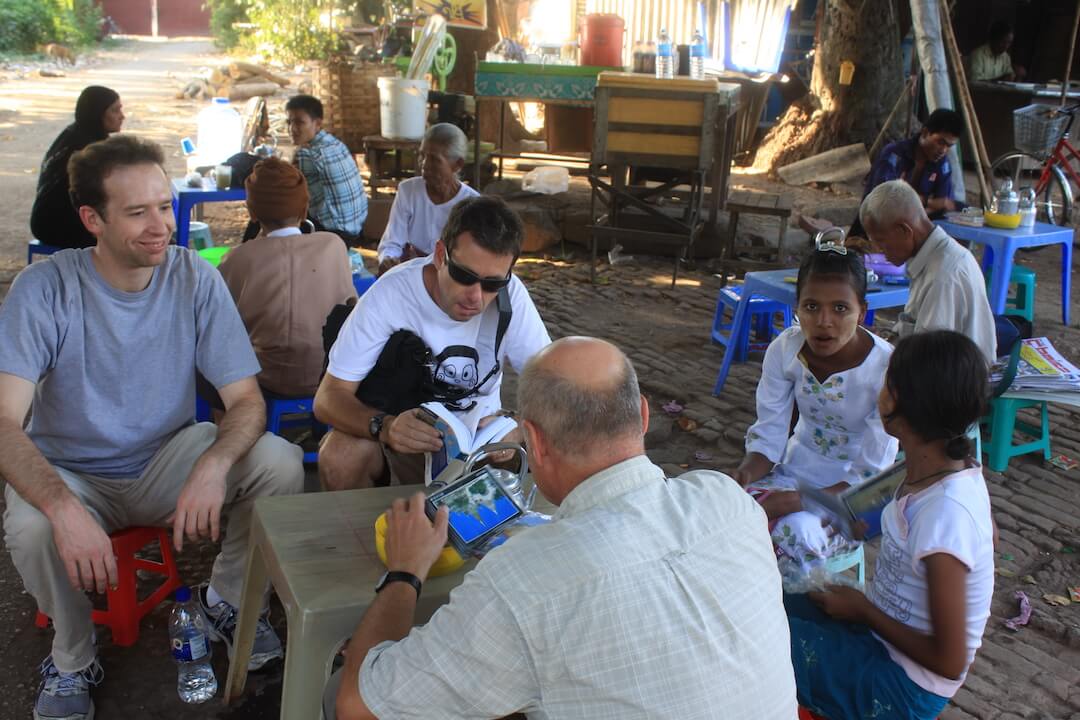 With fellow travellers in Yangon
With fellow travellers in Yangon
So, what’s changed?
A blog on Burma that doesn’t mention Aung San Suu Kyi, aka ‘The Lady’ would not be complete. As mentioned earlier, no politics from me but you have to be beyond ‘tuned out’ not to notice that she is revered with almost god-like status by 99% of the population (the other 1% being the Generals). After ‘What football team do you support?’ (again Arsenal from Kirsty – good and Southampton from me – social leper), the next thing the Burmese are ‘dying’ to talk to you and each other about is the political situation in their country; when will The Lady get power, how things have improved, when will the Generals back down, etc. I sometimes got the impression that the Burmese felt obliged to bring up politics and mention The Lady in public whenever the opportunity arose simply because now they can and fifteen years ago they couldn’t. Of course, this is my opinion and I may be way off the mark but there is certainly no more whispered conversations and support for the opposition is widespread. There is also now a good business to be made in Aung San Suu Kyi merchandise; posters, badges, CDs, t-shirts and the like.
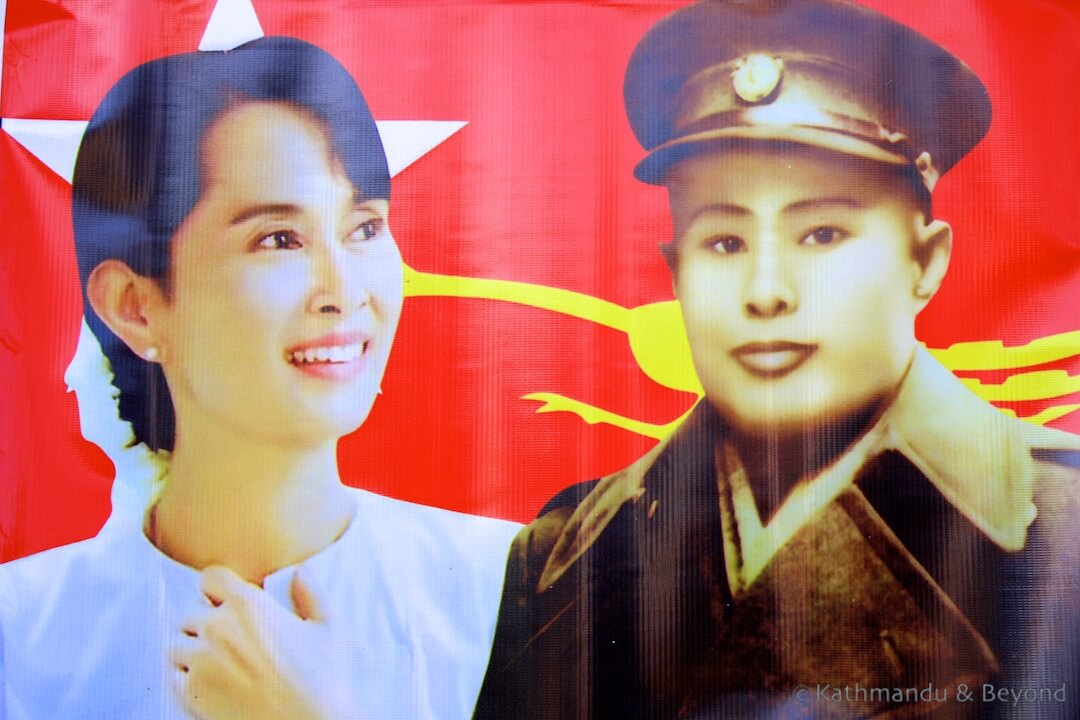 Aung San Suu Kyi and her late father, General Aung San
Aung San Suu Kyi and her late father, General Aung San
The Chinese
The Burmese have a healthy supply of natural gas in the Andaman Sea. The Chinese want it and the Generals are prepared to sell it. You almost have to take your hat off to them. When nearly everyone else has been placing embargoes and sanctions on the military junta, the Chinese have placed their morals in a bottom draw and stormed on in there. They are currently building a 1000km pipeline right across the north of the country that will link the Bay of Bengal with Yunnan province in southern China. And no messing around either, they aim to finish the pipeline within one year – that is just over 83km a month!
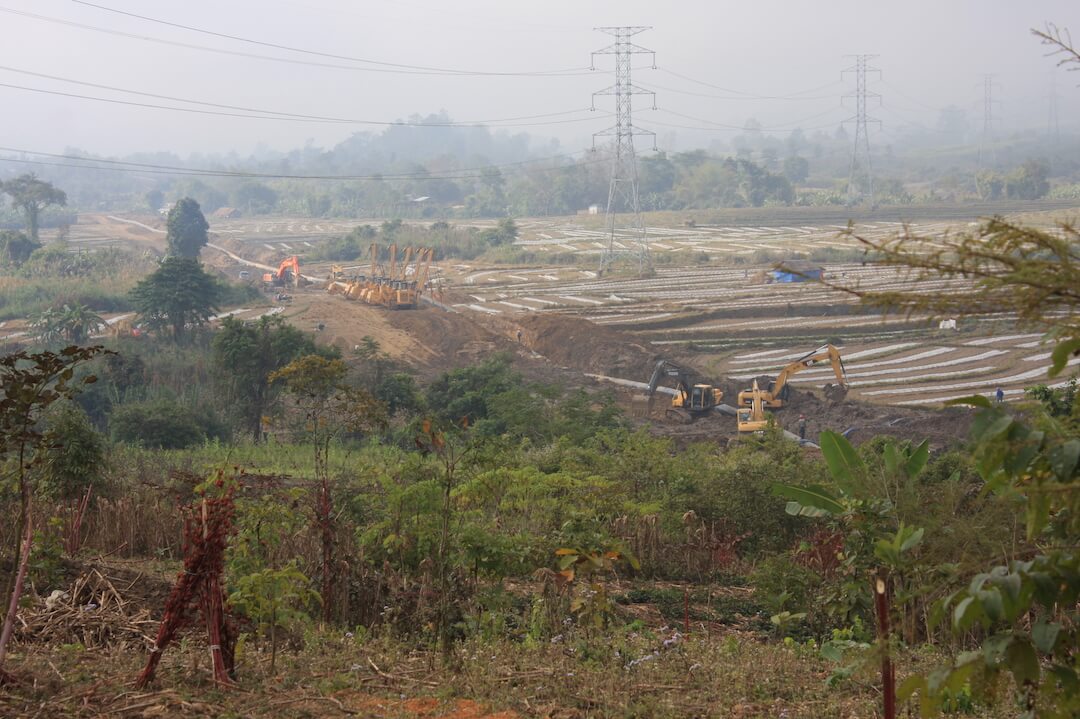 Chinese construction work near Hsipaw
Chinese construction work near Hsipaw
The Nazis
This is a strange one. There seems to be a trend for SS Panzer Division styled crash helmets among motorbike users (young and old, male and female) and apparently (we asked a Burmese/American UN guy we met) they have no idea of their significance. Furthermore, we saw several teenagers with Nazi swastika t-shirts on. Again, they had no idea what they were wearing. I guess they just liked the design? What I want to know is why, in a country where you cannot get very much, can you get SS Panzer Division styled crash helmets? Answers on a postcard please.
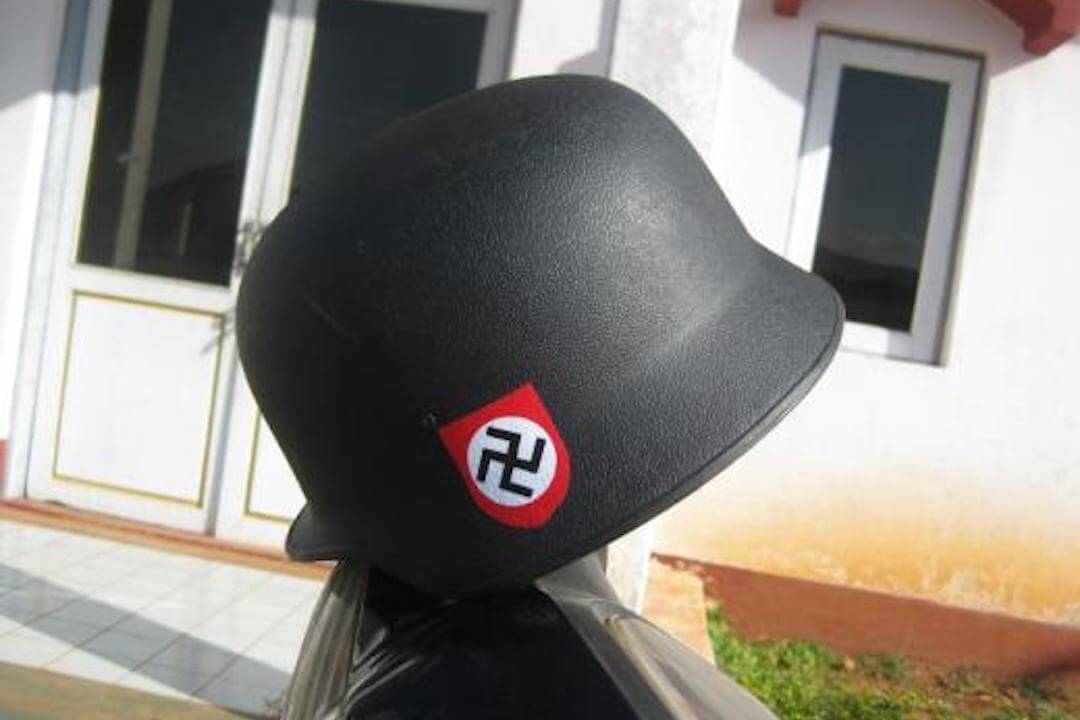 Lashio
Lashio
And finally
In recent times there were always two things that the British bequeathed to a conquered nation and Burma is no exception. The first was admin and in particular form filling – ‘Everything in triplicate please, and all we will do with it is file it in a drawer’.
The second thing was the railway. Travelling by train in Burma is always slow, normally bumpy, sometimes scary but never dull and it’s a great way to see the countryside and mix with the locals. A ten-hour train trip costs about US$10, at least three times what the locals would pay. The same trip by bus would take about six hours but as mentioned earlier, there is never a dull moment on a train.
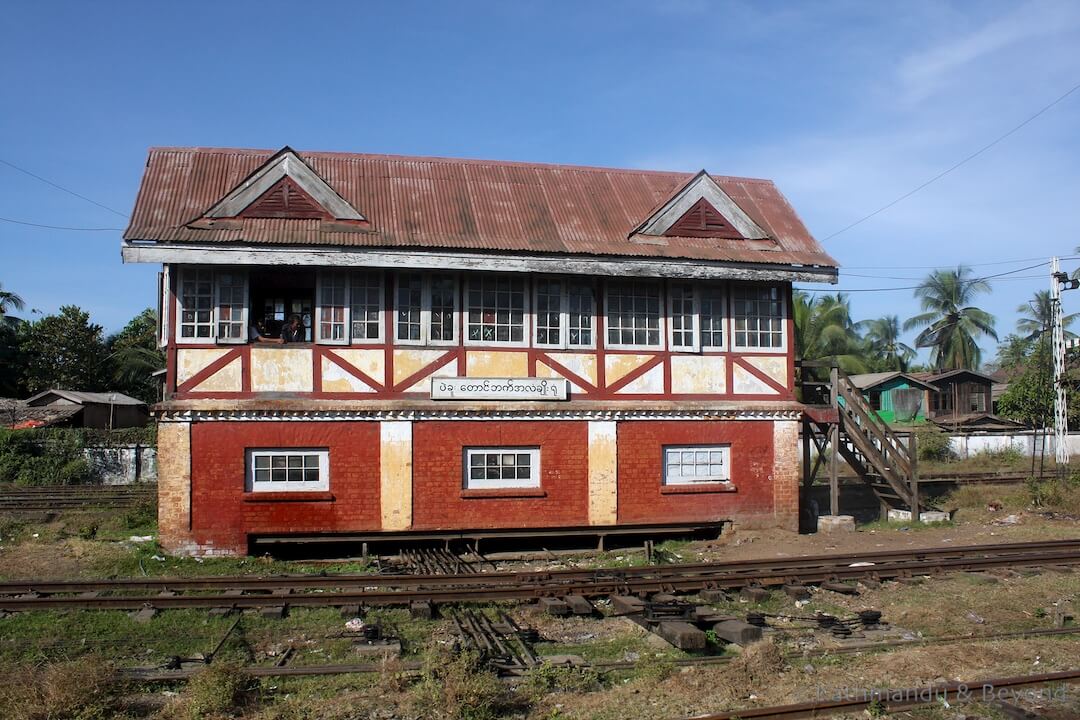 A British-era junction station on the Yangon to Mawlamyine railway line
A British-era junction station on the Yangon to Mawlamyine railway line
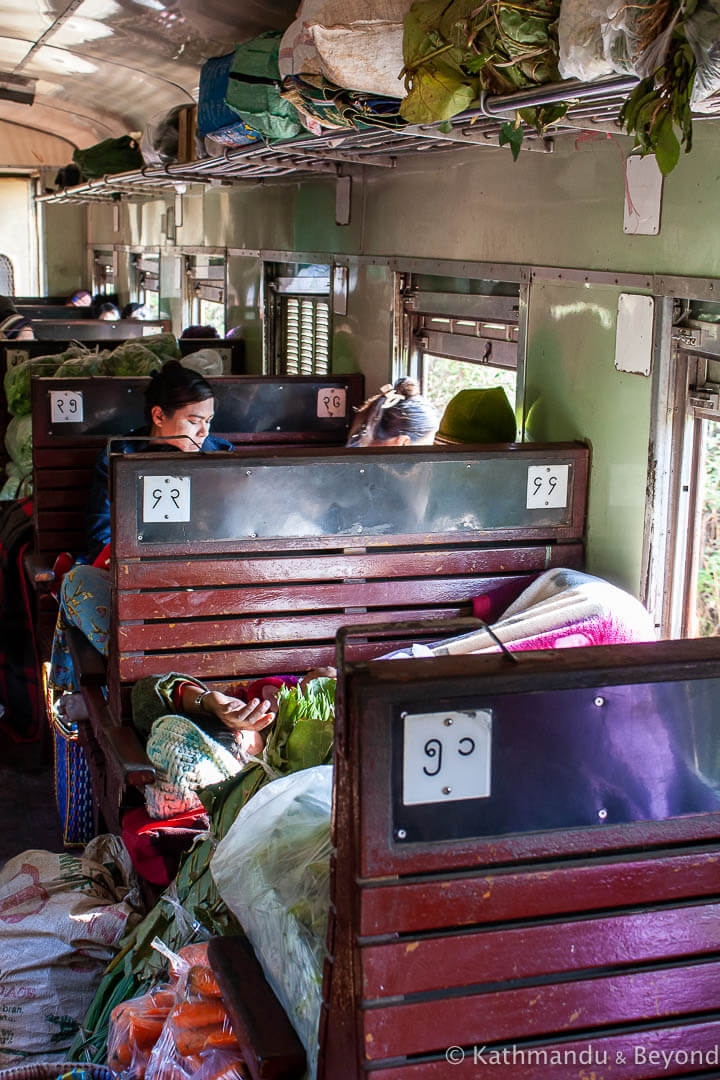
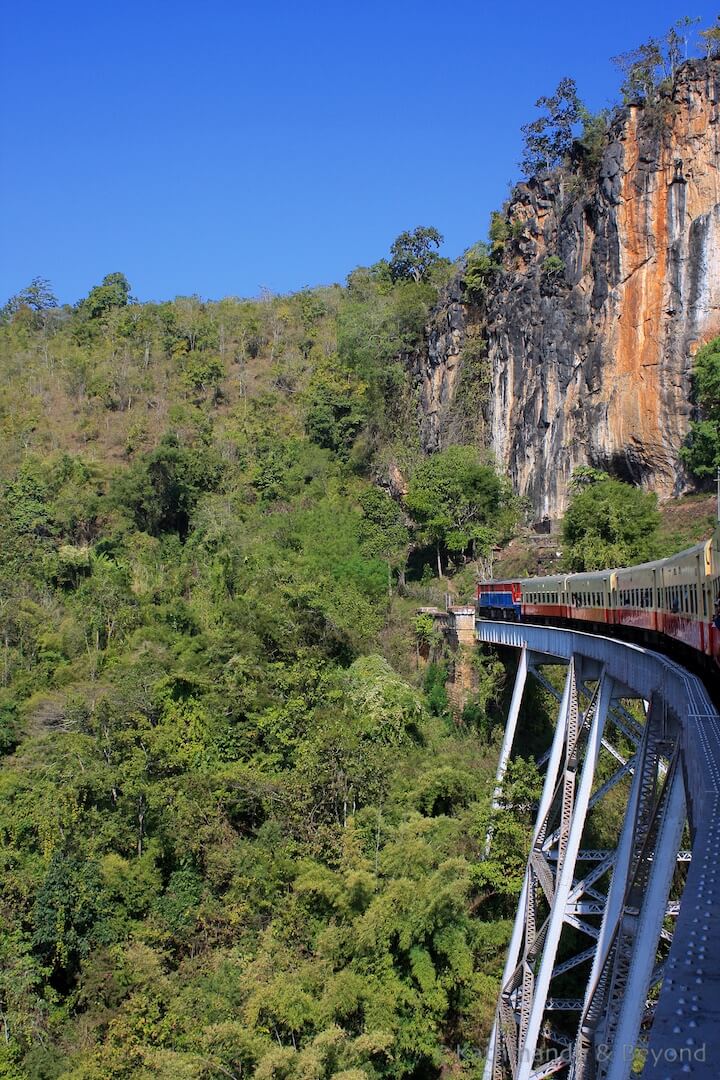
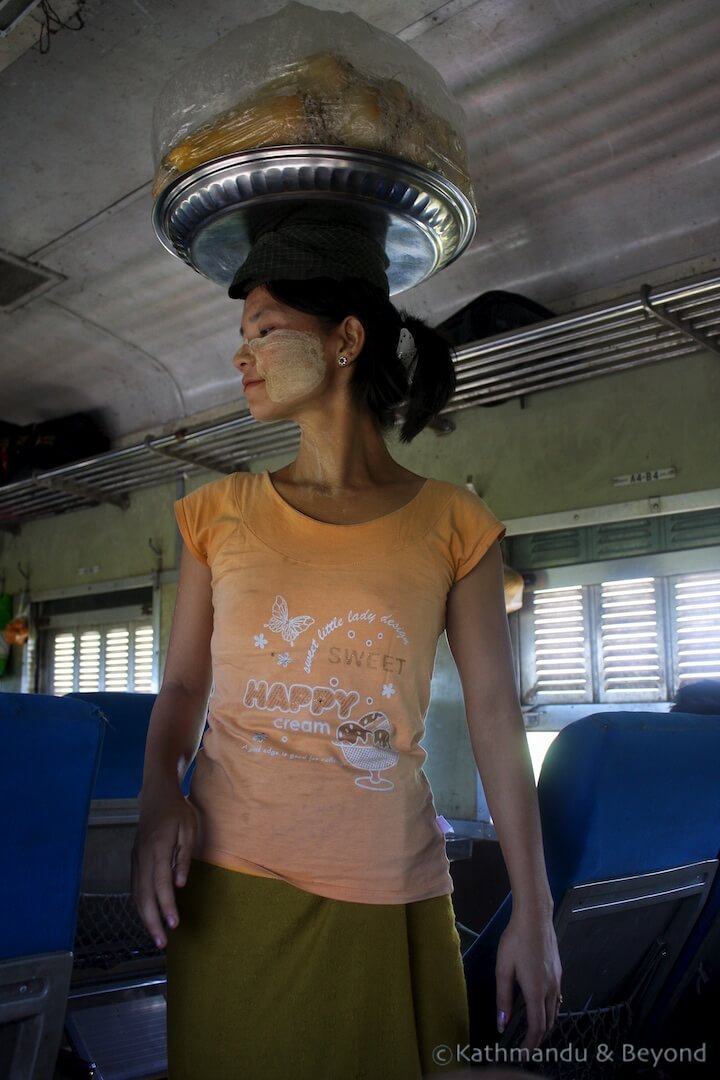
Above: Pyin U Lwin to Kyaukme train (left), crossing the Gokteik Viaduct (centre) and the Yangon to Mawlamyine train (right)
You can travel almost to the Chinese border in the north and to the Thai border in the south and much of this narrow-gauge track is in need of some sort of repair. You stand up whilst the train is moving at your peril and often even the chairs are not bolted down (think roller-coaster ride for hours at a time). We were convinced on more than one occasion that the train actually jumped up off the rails. The highlight had to be crossing the Gokteik railway viaduct in the north of the country and watching the hawkers walk up and down the carriages balancing their wares on their heads and pouring tea whilst the train was hurtling along at full speed.
As one local put it, ‘It’s not as bad as some people say, not as good as you hope’ (source Lonely Planet).

I see someone post old photos of Rangoon which took by you.
Thank you for letting us know. Can you please send a link to where you saw them?